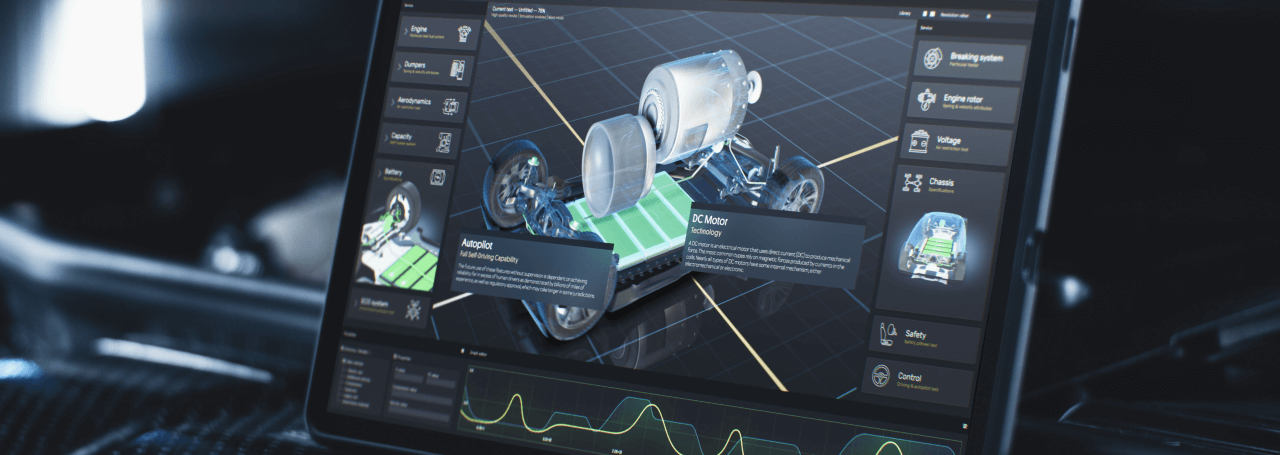- 1. Exploring the Versatility of Mini USB Pins
- Maximizing the Functionality of Mini USB Pins
- Innovative Uses of Mini USB Pins in Modern Technology
- The Role of Mini USB Pins in Enhancing Connectivity
- 5. Practical Tips for Utilizing Mini USB Pins
- 6. Future Prospects of Mini USB Pins in Tech Industry
- Frequently Asked Questions
In the wake of recent technological advancements, the humble Mini USB pin has emerged as a surprisingly versatile and powerful component in various devices. This article delves into the multifaceted nature of Mini USB pins, exploring their potential and how they can be harnessed to maximize functionality in a range of applications. We will delve into the innovative ways these pins are being utilized in modern technology, and the pivotal role they play in enhancing connectivity.
From practical tips on how to best utilize these pins, to a look at their future prospects in the tech industry, this article aims to provide a comprehensive guide to unlocking the potential of Mini USB pins. As the world becomes increasingly interconnected, the importance of these small yet significant components cannot be overstated.
Drawing on the latest news and developments in the field, this article will provide reliable and trustworthy information to help readers understand and appreciate the power and potential of Mini USB pins. Whether you’re a tech enthusiast or a professional in the industry, this exploration of Mini USB pins will offer valuable insights and practical advice.
Stay tuned as we unravel the complexities and potentials of these tiny technological wonders, and how they are shaping the future of connectivity in the tech industry.
1. Exploring the Versatility of Mini USB Pins
When it comes to the realm of connectivity, Mini USB pins hold a significant position. Their compact size and high functionality make them a preferred choice for many devices. However, the potential of these tiny powerhouses is often underestimated. Let’s delve into the various ways in which these pins can be utilized:
- Power Supply: Mini USB pins can efficiently deliver power to various devices, making them a reliable source of energy.
- Data Transfer: They are capable of transferring data at high speeds, ensuring quick and efficient communication between devices.
- Device Control: With the right configuration, these pins can be used to control the operations of a device, adding a layer of versatility to their functionality.
By exploring these uses, we can truly unlock the potential of Mini USB pins, taking our devices to new heights of efficiency and functionality.
Maximizing the Functionality of Mini USB Pins
Understanding the full potential of mini USB pins can significantly enhance the efficiency and versatility of your devices. The mini USB, despite its small size, is a powerhouse of connectivity, providing a reliable and fast data transfer solution. By maximizing the functionality of these pins, you can unlock a world of possibilities in terms of data transfer, charging, and device compatibility.
One of the key ways to maximize the functionality of mini USB pins is through the use of adapters and converters. These tools allow the mini USB to connect with a variety of other devices, expanding its usability. Adapters and converters can transform a mini USB into a micro USB, a USB Type-C, or even an HDMI port, providing a level of versatility that is unmatched by other types of connectors. This means that with the right tools, your mini USB can connect to almost any device, making it a highly valuable asset in today’s digital world.
In conclusion, the potential of mini USB pins is vast and largely untapped. By understanding their capabilities and learning how to maximize their functionality, you can greatly enhance the versatility and efficiency of your devices. Whether it’s through the use of adapters and converters, or simply by understanding the full capabilities of these small but powerful connectors, maximizing the functionality of mini USB pins can lead to a significant improvement in your digital experience.
Innovative Uses of Mini USB Pins in Modern Technology
As technology continues to evolve at a rapid pace, the humble Mini USB pin has found itself at the center of numerous innovative applications. These tiny connectors, often overlooked, are now playing a crucial role in the functioning of modern technology. From powering devices to transferring data, their potential is being unlocked in ways that were unimaginable a few years ago.
Tip Sheet: Always ensure that your Mini USB pins are clean and free from dust or debris. This can significantly improve their performance and lifespan.
One of the most notable uses of Mini USB pins is in the realm of portable devices. These pins have made it possible to charge and sync data on the go, thereby enhancing the portability and convenience of devices such as smartphones, tablets, and digital cameras. Furthermore, they are also being used in innovative ways in the field of robotics and automation, where they facilitate communication between different components of a system.
Another exciting application of Mini USB pins is in the world of Internet of Things (IoT). These pins are being used to connect a multitude of devices, from smart home appliances to wearable tech, enabling them to communicate and share data seamlessly. This has opened up new possibilities for creating interconnected, smart environments that can adapt and respond to user needs.
Tip Sheet: When using Mini USB pins for IoT applications, ensure that they are compatible with the devices you are connecting. Not all pins are created equal, and using the wrong one can lead to connectivity issues.
In conclusion, the potential of Mini USB pins is vast and largely untapped. As we continue to push the boundaries of technology, these tiny connectors will undoubtedly play an even more significant role in shaping the future of innovation.
The Role of Mini USB Pins in Enhancing Connectivity
Mini USB pins play a pivotal role in enhancing connectivity, serving as the backbone for data transfer and power supply in various devices. These pins, typically five in number, each have a specific function that ensures the smooth operation of the device they are part of. For instance, the first pin is for power, the second and third for data transfer, the fourth for identification, and the fifth for grounding. This strategic arrangement of pins allows for efficient and effective connectivity.
Comparing the mini USB to other types of USB connectors, such as the micro USB and the USB Type-C, one can see the evolution and improvement in connectivity. For instance, the mini USB has a data transfer rate of 480 Mbps, while the micro USB and the USB Type-C have rates of 480 Mbps and 10 Gbps respectively. This shows the advancement in technology and the continuous effort to enhance connectivity.
| Type of USB | Data Transfer Rate |
|---|---|
| Mini USB | 480 Mbps |
| Micro USB | 480 Mbps |
| USB Type-C | 10 Gbps |
Despite the advancements in USB technology, the mini USB still holds its ground in certain applications. Its robust design and compatibility with a wide range of devices make it a reliable choice for enhancing connectivity. While it may not offer the high-speed data transfer of its successors, its versatility and durability ensure it remains a viable option in the realm of USB technology.
5. Practical Tips for Utilizing Mini USB Pins
Maximizing the functionality of your mini USB pins can significantly enhance your device’s performance. Proper utilization of these pins not only ensures efficient data transfer but also prolongs the lifespan of your device. Here are a few practical tips to help you unlock the full potential of your mini USB pins:
- Regular Cleaning: Dust and debris can accumulate over time, causing poor contact between the pins and the USB port. Regular cleaning using a soft brush or compressed air can help maintain optimal contact and improve data transfer speed.
- Proper Insertion: Always ensure that the USB is inserted correctly. Forcing the USB into the port can bend or damage the pins, leading to poor performance or even failure.
- Avoid Overloading: Overloading the USB port with too much data can cause the pins to overheat and degrade over time. Always ensure that your data transfer is within the capacity of the USB port.
Another crucial aspect to consider is the quality of your USB cable. A high-quality cable will have well-spaced and sturdy pins that can withstand regular use without bending or breaking. Additionally, consider using a USB hub if you frequently need to connect multiple devices. This will not only protect your device’s USB port from wear and tear but also allow for more efficient data transfer.
6. Future Prospects of Mini USB Pins in Tech Industry
With the rapid advancement in technology, the role of Mini USB pins is becoming increasingly significant. These tiny components are the backbone of many devices, enabling them to function efficiently and reliably. They are particularly crucial in the tech industry, where they are used in a wide range of applications, from charging devices to data transfer. However, despite their importance, Mini USB pins are not without their challenges. Their small size can make them difficult to handle and prone to damage, and their limited capacity can restrict their functionality.
On the positive side, the potential of Mini USB pins is vast. They are highly versatile and can be used in a wide range of devices, from smartphones to laptops to gaming consoles. This versatility, coupled with their small size, makes them an ideal solution for portable devices. Furthermore, as technology continues to evolve, it is likely that the capacity and functionality of Mini USB pins will improve, making them even more valuable to the tech industry.
However, there are also potential drawbacks to consider. The small size of Mini USB pins can make them difficult to handle and prone to damage. Additionally, as technology continues to advance, there is a risk that Mini USB pins could become obsolete, replaced by newer, more efficient technologies. Despite these challenges, the future prospects of Mini USB pins in the tech industry look promising, with many opportunities for growth and innovation.
Frequently Asked Questions
What are the different types of Mini USB Pins available?
There are several types of Mini USB Pins available, including Mini-A, Mini-B, and Mini-AB. Each type has a different configuration and is used for different purposes in various devices.
How do Mini USB Pins contribute to faster data transfer?
Mini USB Pins play a crucial role in data transfer. They facilitate the transmission of data from one device to another. The speed of data transfer depends on the type of Mini USB Pin and the device’s capabilities.
Can Mini USB Pins be used for charging devices?
Yes, Mini USB Pins can be used for charging devices. They are commonly used in various portable devices like cameras, MP3 players, and mobile phones for charging purposes.
What precautions should be taken while using Mini USB Pins?
While using Mini USB Pins, it’s important to ensure that they are properly aligned with the device’s port to avoid any damage. Also, they should be kept clean and free from dust to ensure optimal performance.
Are Mini USB Pins compatible with all devices?
Mini USB Pins are not compatible with all devices. They are primarily used in older and smaller devices. For newer devices, Micro USB or USB-C connectors are commonly used.
DISCOVER OUR
Whitepaper
Achieve the perfect user-display interaction with the right Touch Sensor IC. Ever faced issues with phantom touch events or certification? Boost your R&D like a pro with our Whitepaper!



